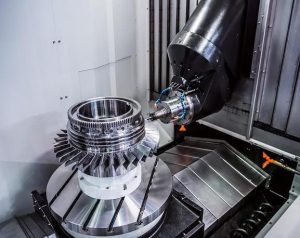How to Choose CNC Turned Components?
Selecting the right CNC turned components is critical for the success of your project, ensuring that each piece meets your requirements for quality, performance, and cost-efficiency. Here's a detailed approach to making an informed choice.

Understand Your Requirements
Assessing Part Complexity and Precision
Begin by evaluating the complexity of the components you need, including any specific geometries or features like threads, grooves, or tolerances. CNC turning can achieve tolerances as tight as ±0.005 inches (±0.127 mm), crucial for high-precision applications.
Material Selection
Choose a material that fits the intended use of the component, considering factors such as strength, corrosion resistance, thermal properties, and machinability. Common materials for CNC turned components include aluminum, stainless steel, brass, and plastics, each offering different benefits in terms of cost, weight, and performance.
Evaluate Manufacturer Capabilities
Technological Proficiency
Ensure the manufacturer has advanced CNC turning centers and the technical know-how to handle your project's requirements. This includes the ability to work with the chosen material and achieve the necessary precision and features.
Quality Control Measures
Inquire about the manufacturer's quality control processes. Look for certifications like ISO 9001, which indicates adherence to stringent quality standards. Reliable manufacturers will perform dimensional checks and material inspections to ensure every component meets your specifications.
Consider Production Efficiency and Cost
Analyzing Cost Factors
Understand the factors that influence the cost of CNC turned components, including material selection, part complexity, and the required precision. Request detailed quotes to ensure transparency and avoid unexpected expenses.
Efficiency and Lead Times
Consider the manufacturer's efficiency and ability to meet your project's deadlines. Advanced CNC machinery and skilled operators can significantly reduce turnaround times, especially for high-volume orders, impacting overall project timelines and costs.
Assess Communication and Support
Effective Communication
Choose a manufacturer that values clear and open communication. Regular updates and easy access to project statuses can help identify and resolve issues quickly, ensuring the project stays on track.
Technical Support
A good manufacturer will offer technical support, from material selection to design optimization, helping improve your component's performance while potentially reducing costs.
Reviewing Portfolios and References
Previous Work and Expertise
Review the manufacturer's previous work and ask for references. This can give you insight into their experience with similar projects and their ability to deliver high-quality CNC turned components.
Customer Feedback
Customer testimonials and feedback can offer valuable information about the manufacturer's reliability, quality of work, and customer service, guiding you in making an informed decision.
In summary, choosing the right CNC turned components involves a thorough understanding of your requirements, evaluating manufacturers' capabilities, considering production efficiency and cost, and assessing communication and support. By carefully selecting a manufacturing partner, you can ensure that your CNC turned components meet the highest standards of quality and precision, contributing to the success of your project.